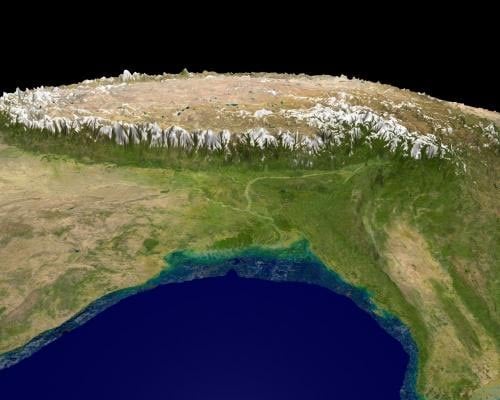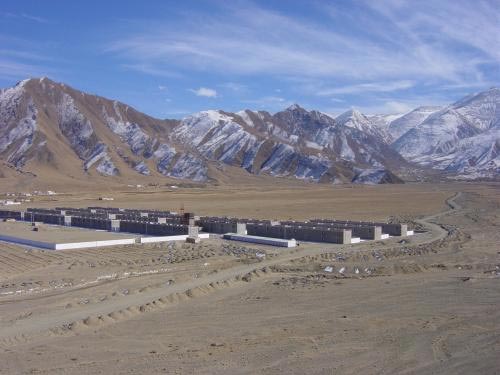For the first time at a major international forum on climate change, Tibetans will be present at the COP15 summit in Copenhagen this week to present new information about the global implications of climate change in Tibet.
Tibet, the world’s largest and highest plateau, is the ‘world’s third pole’ because it contains the biggest ice fields outside of the Arctic and Antarctic. The Tibetan plateau is warming twice as fast as the rest of the world and the impact of melting glaciers could be catastrophic. No other area in the world is a water repository of such size, serving as a lifeline for much of a continent and for millions of people. The sustainable management of Tibet has become a serious security issue in the region.

Tibet, the world’s largest and highest plateau, is referred to as the ‘world’s third pole’ because it contains the biggest ice fields outside of the Arctic and Antarctic. (NASA Goddard Space Flight Center/Scientific Vizualization Studio)
At COP15, Tibetans working for the Tibetan exile government and NGOs in Dharamsala, India, will report on how China’s policies in Tibet are contributing to the warming of the plateau and excluding Tibetans from the stewardship of their land. The principal finding of their reporting is that Tibetan nomads are being settled and displaced from the grasslands in a misguided attempt to reduce desertification. This goes against the latest scientific research that states that livestock mobility is critical to the health of the grasslands and that grazing can mitigate the negative warming effects on the rangelands. Tibetans’ knowledge of their land represents the best hope of preserving a fragile high-altitude ecosystem that is of vital importance not only to Tibetans but also to China and the rest of the world.
“The impact of climate change and ecological depletion on the Tibetan plateau is now a global issue. China’s policies must be called to account and as a matter of urgency Tibetans should be involved in the decision-making and management of Tibet’s natural resources. We are also calling for an independent, international scientific assessment of Tibet’s ecosystem and current land-use policies.

The Chinese government has been implementing policies of settling Tibetan nomads, confiscating their land, and fencing pastoral areas. The involvement of Tibetan nomads is essential to sustaining the long-term health of the ecosystems and water resources that China depends upon. (ICT)
Cooperation of all stakeholders from Tibetan nomads to Chinese scientists and representatives of countries downstream that depend on Tibet’s water – is essential given the scale of the threat before us.”
For information on Tibet Third Pole events at Copenhagen, see: http://www.tibetnetwork.org/campaign-tibetthirdpole. Tibet Third Pole is a campaign that was created to bring the environmental crisis in Tibet and the fate of Tibet’s nomads to the attention of climate change negotiators at the UN talks in Copenhagen, the media and the general public.
See ICT’s briefing paper, ‘The World’s ‘Third Pole’: Tibet and Climate Change,’ for more information on climate change in Tibet.

